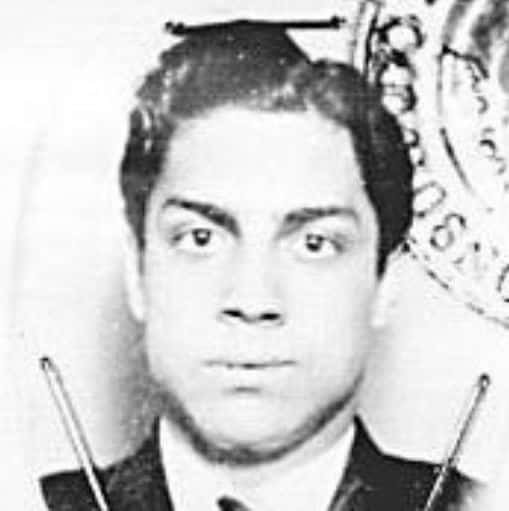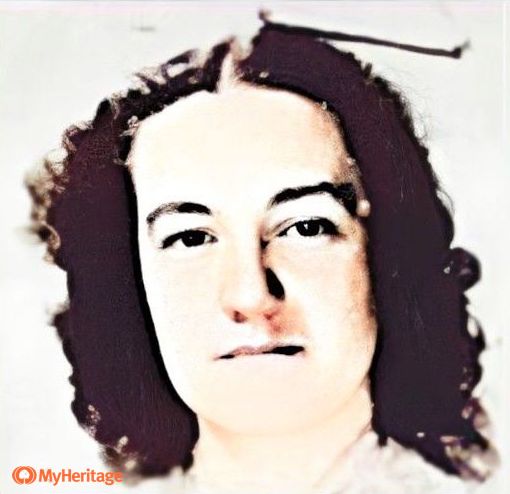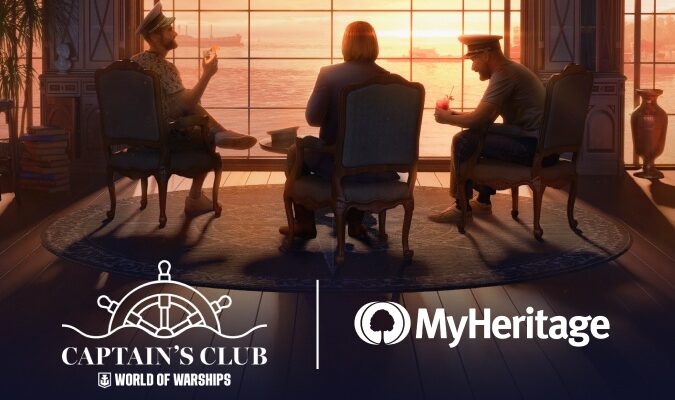5 Spanish Luminaries Who Fled the Franco Regime Found in MyHeritage Historical Record Collection
- By Daniella


In the early 1930s, Spain underwent a number of major political changes. The country’s transition to the Second Spanish Republic was marked by liberal reforms and escalating tensions between various factions. The global Great Depression, the high unemployment rate, and the various problems plaguing the agricultural and industrial sectors contributed to economic hardships. Then the Spanish Civil War broke out in 1936, and after 3 devastating years, the war ended with a victory for the Franco dictatorship.
In the previous decade, a new generation of poets arose in Spanish literary circles. These writers and intellectuals, who later became known as the Generation of ’27, experimented with new forms of poetry and art and left an indelible mark not only on the world of literature, but also on cinema, dance, and science. Under Franco, of course, they knew they would suffer from limitations on their expressive freedom, and many of them sought to emigrate in the years immediately following the war.
Our Research team dove into MyHeritage’s Spain, Migration to the Americas, 1880-1930 collection and found some records of these talented individuals who left Spain during or shortly after the war. This valuable collection contains records of Spanish emigrants who moved to the Americas in the late 19th and early 20th century, and though the majority of the records are dated between 1880 and 1930, some records may be from a little earlier or later — including most of the records below. Records in this collection typically include the person’s name, date and place of birth, date and place of departure, date and place of arrival, and the emigrant’s family members. They also include photographs of the individuals, which we were able to bring to life with the MyHeritage photo features.
Luis Buñuel Portolés
Luis Buñuel Portolés (1900–1983) was a Spanish filmmaker. Born in Calanda, Spain, Buñuel attended the University of Madrid, where he studied philosophy and literature and became involved in avant-garde artistic circles. During his university years, he met Salvador Dalí, with whom he would collaborate on his first and most famous film, Un Chien Andalou (An Andalusian Dog, 1929).
During the Spanish Civil War, Buñuel placed himself at the disposal of the Republican government. The minister for foreign affairs sent him to Geneva and then to Paris for two years, where he was responsible for cataloging Republican propaganda films. Buñuel also took left-wing tracts to Spain, was involved in occasional spying, acted as a bodyguard, and supervised the making of a documentary entitled España 1936 in France and España leal, ¡en armas! (Loyal Spain, to Arms!) in Spain, that covered the elections, the parades, the riots, and the war.
In 1946, Buñuel immigrated to Mexico and his career took a significant turn.

Detail of Luis Buñuel’s identification card from 1946, including a mention of his occupation as a producer and director of cinema
While in Mexico he produced some of his most acclaimed works, including Los Olvidados (The Forgotten, 1950), and Viridiana (1961), which won the Palme d’Or at the Cannes Film Festival.
In the 1960s and 1970s, Buñuel returned to Europe and continued to create films that challenged conventional storytelling and societal norms, like The Discreet Charm of the Bourgeoisie (1972) and That Obscure Object of Desire (1977).
Buñuel passed away on July 29, 1983, in Mexico City, leaving behind his wife, actress Jeanne Rucar, and two children.
Max Aub Mohrenwitz
Max Aub Mohrenwitz (1903-1972) was a novelist and playwright, born in Paris to a German father and French mother. In 1914 at the outbreak of World War I, his father was in Spain on business and could not return to France. Aub and his mother joined him and the family settled in Valencia. In 1929, Aub joined the Spanish Socialist Workers’ Party and remained a lifelong member. He became an active participant in the Republican cause against Franco’s Nationalist forces and during the Spanish Civil War worked as a cultural attaché for the Republican government. He used his talents as a writer to contribute to the anti-fascist propaganda effort.
In 1937, Aub was responsible for placing Picasso’s “Guernica” on display at the International Exposition, and took part in the organization of the Second Congress of Anti-Fascists Writers.
He was arrested in 1939 and sent to a concentration camp in France. He managed to escape and, in 1942, made his way to Mexico, which became his home in exile for the rest of his life.

Record of Max Aub Mohrenwitz from 1942 from the Migration Service of Mexico
The document above mentions his appearance: standing at 1.67 meters, he had a “regular” complexion, white skin, brown hair, “thick eyebrows,” brown eyes, a straight nose, and a “medium-sized” mouth. It also mentions that he spoke French, and adds that he entered as a seeker of political asylum on the steamship Nyassa and that he had authorization to engage in paid activities.
Max Aub was a major literary figure, particularly well known in Spain for his cycle of novels and short stories on the Spanish Civil War. His literary output, including novels like Campo cerrado (Closed Field), reflects the devastating impact of the war and its aftermath, exploring themes of political disillusionment, exile, and the complex layers of Spanish society.
Antonio Ruiz Soler
Antonio Ruiz Soler, commonly known as Antonio or “Antonio el Bailarín” (“Antonio the Dancer”), was a renowned Spanish dancer and choreographer. Born in 1921, in Seville, Spain, Antonio began his apprenticeship at the academy of maestro Realito at the age of 6.
In 1937, before turning 16, Antonio became an international star, performing in Europe, South America, and then North America — mostly in New York — during the mid 1940s with his dancing partner Rosario (Florence Pérez Padilla). Their partnership lasted from 1928 until 1952 and together they became world-famous, billed as Rosario y Antonio.
In 1953 he formed his own Spanish ballet company, Antonio y los Ballets de Madrid.
Antonio Ruiz Soler died in 1996 in Madrid.

Antonio “the Dancer” Ruiz Soler. Detail of Identification Card from 1947 mentioning that he resides in New York with Dolores Soler.
The above travel document, issued by the Consulate of Mexico in Caracas, Venezuela, includes his photograph as well as a physical description. It says he stood at 1.64 meters and had dark skin color, black hair, eyebrows, and eyes, a straight nose, a “medium” mouth, and no mustache or beard. He also says that he spoke English and that he was born in Seville in 1921.

Additional information on Antonio the Dancer
On the reverse side of one of the pages, he expands upon the information, mentioning that he provides his services as an artist and member of the “Los Chavalillos” Ballet.


Blas Cabrera
Blas Cabrera Felipe (1878–1945) was a prominent Spanish physicist known for his contributions to the field of magnetism.
Cabrera was born on May 20, 1878, in Arrecife, Lanzarote, Canary Islands. He studied at the University of La Laguna and the University of Valencia, where he completed his doctorate in 1901. In 1905, Cabrera was appointed professor of electricity and magnetism at the Central University of Madrid, now known as the Complutense University of Madrid. His work during this time made significant strides in the understanding of magnetism and its properties. He introduced the concept of “nuclear moments” in atoms, a fundamental aspect of quantum theory.
Cabrera is most recognized for his pioneering work on the quantization of magnetic flux, where he predicted that magnetic fields could only exist in discrete amounts — a precursor to quantum mechanics.

Record of Blas Cabrera from 1942
During the Spanish Civil War, he sided with the Republicans, and in 1936 he became the Director of the Institute of Physics at the Central University of Madrid.
After the Republican side lost, Cabrera, like many intellectuals of his time, was forced into exile. He left for Mexico in 1939, where he would continue his research and teaching until his death in 1945.


In recognition of his contributions, a lunar crater and a high school in Madrid are named after him, and in 2011, the Instituto de Física Fundamental of the Spanish National Research Council (CSIC) was renamed the Instituto de Física Fundamental “Blas Cabrera”.
Ramón José Sender Garcés
Ramón José Sender Garcés (1901–1982) was a Spanish novelist, essayist, and journalist who is considered one of the most important Spanish writers of the 20th century.
Born in Chalamera, Spain, Sender began his career in the 1920s as a journalist and later became an editor for the Madrid newspaper El Sol. He wrote his first novel, Pro Patria, in 1927, but it was his second novel, Mr. Witt Among the Rebels (1936) that established his literary reputation. This book and his other pre-Civil War novels were marked by a concern for social issues and a search for identity.
During the Spanish Civil War (1936–39), Sender fought on the Republican side. In 1939, after the defeat of the Republic by the forces of Francisco Franco, Sender went into exile, initially to France and later to Mexico and then the United States.

Record of Ramón Sender mentioning his status as a widower and his occupation: writer and military officer
His experiences during the Civil War deeply affected his writing. His novels from this period, including The King and the Queen (1949) and Dark Wedding (1953) often reflect on the trauma and moral complexities of the war.

Record of Ramón Sender that mentions his children, Ramón and Andrea.
The above documents include a physical description of Sender: 1.79 meters in height, robust physical constitution, black hair, thick eyebrows, black eyes, straight nose, and protruding chin. They also mention his widowed marital status, the fact that he speaks French, and that he resides in Mexico as a political exile together with his youngest children Ramón and Andrea, aged 4 and 3 respectively.
Sender became a U.S. citizen in 1946 and taught Spanish literature at the University of New Mexico from 1948 until his retirement in 1972.
His works continued to be critical of Franco’s dictatorship, but he also explored universal themes such as the tension between freedom and security, the individual’s struggle against social pressure, and the destructive effects of fanaticism.
Even in exile, Sender continued to write about Spain, maintaining a prolific output of novels, stories, and essays until his death in San Diego, California, in 1982. His works remain an important part of the Spanish literary canon.
Blanca Chacel
Blanca Chacel Arimón (1914–2022), Spanish archivist and sister of the writer Rosa Chacel, was a prominent figure in the protection of Spanish artistic heritage during the Civil War. The daughter of Francisco Chacel Barbero and Rosa-Cruz Arimón Pacheco, she went into exile in Mexico after her notable work in Spain. In 1937, she was appointed Assistant to Archives, Libraries and Museums and, shortly after, she joined the Central Board for the Protection of Artistic Treasure. This entity was created to safeguard works of art during the conflict.


Blanca played a key role in the evacuation of important works of Spanish art from Catalonia to Geneva in 1939, where she also contributed to the exhibition of these works at the Musée d’Art et d’Histoire. Her trip to Perpignan with Elena Gómez de la Serna, carrying suitcases with essential documents, exemplifies her courage and commitment to the preservation of the artistic heritage of her country.

Record of Blanca Chacel from 1942
The above document offers detailed information including her height of 1.56 meters, brown hair and eyes, single status, and the fact that she spoke Spanish as a mother tongue, but also French. She was born in Madrid and lived in Mexico City at the time this record was taken, and she declared her profession as “archivist.” An additional document from 1941 mentions that she lived with her sister, Rosa Chacel, at 208 Copacabana Street in Río de Janeiro.
Though her actions were widely recognized as heroic, Blanca saw them as natural and necessary.
If you have roots in Spain, there’s a great chance of finding your ancestors in this important collection even if they weren’t famous writers or activists! Search Spain, Migration to the Americas, 1880-1930 now to discover their stories.









